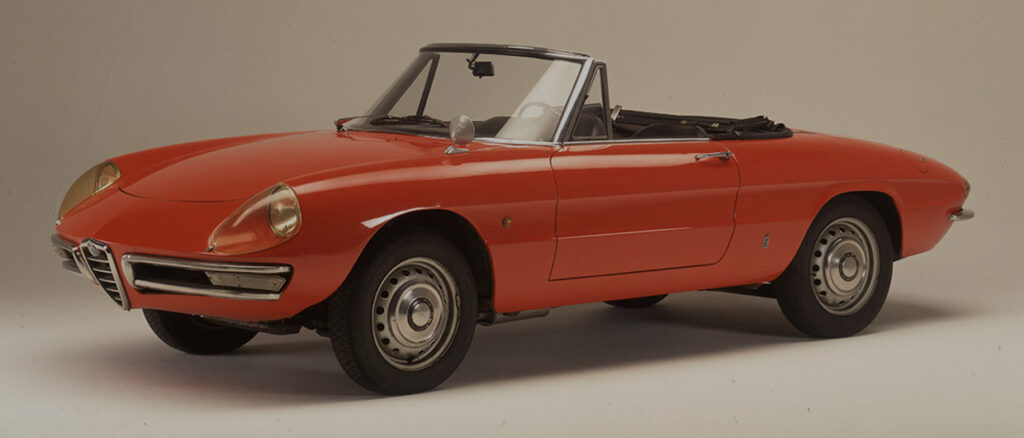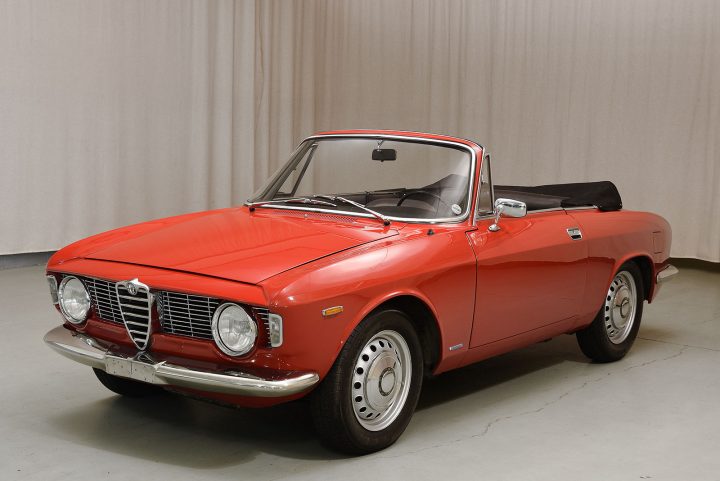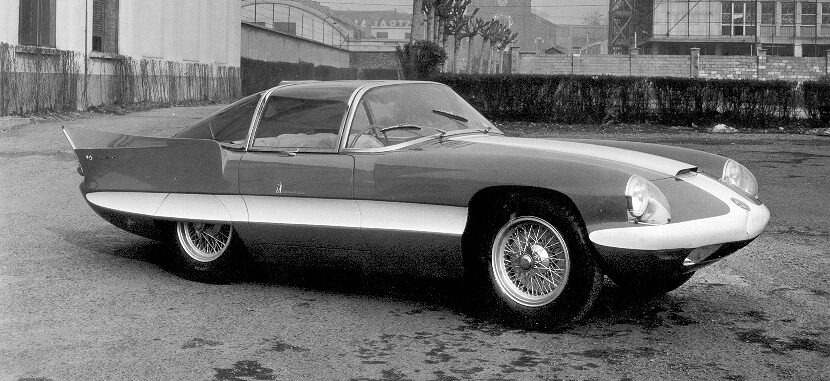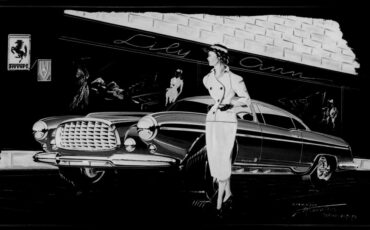
The Alfa Romeo Duetto, one of the most iconic roadsters ever produced, represents a confluence of Italian design, engineering prowess, and a unique moment in automotive history. Its design genesis reflects not only the artistic innovation that defined mid-20th century automotive styling but also the commercial and industrial pressures of the era. The car’s journey from conception to international fame is a testament to the creative brilliance of Pininfarina and Alfa Romeo’s bold vision.
A Vision Sparked by the Success of the Giulia
The design journey of the Duetto began in the early 1960s, following the commercial success of Alfa Romeo’s Giulia series. The Giulia sedan, introduced in 1962, was quickly followed by a coupé in 1963, both of which performed exceptionally well in the marketplace. Seeing the strong sales of the coupé version, Alfa Romeo decided it was time to round out the series with a new spider (convertible). This decision set the stage for what would become the Duetto.

Initially, Alfa Romeo turned to Bertone, to develop the spider variant. Giorgetto Giugiaro, Bertone’s talented designers, created a prototype known as the Alfa Romeo GTC, which was manufactured by Carrozzeria Touring and launched in 1965. However, the reception from the market was lukewarm, and the GTC failed to capture the same magic as its predecessors. This setback led Alfa Romeo to seek alternative design solutions, marking a major turning point in the spider’s development.
The Shift to Pininfarina
In 1965, Alfa Romeo shifted its focus from Bertone to Pininfarina, the design house responsible for the legendary Giulietta Spider. At the time, Bertone was fully engaged with the Fiat 850 Spider project, and Carrozzeria Touring was on the brink of closure. This forced Alfa Romeo to look elsewhere, and the responsibility of creating a new spider fell to Pininfarina, which had a strong pedigree in both styling and aerodynamic innovation.

Pininfarina had already established a reputation for avant-garde design with its “Superflow” series, a lineup of dream cars based on the 1953 Alfa Romeo 6C 3000 CM chassis. These concept cars showcased futuristic elements like Plexiglas roofs and aerodynamic forms that hinted at the design direction for the future of Alfa Romeo. It was this forward-thinking approach that Battista “Pinin” Farina, the founder of the firm, would bring to the creation of what would eventually become the Duetto.
From Superflow to Duetto: An Evolution in Design
Pininfarina’s work on the Superflow series, particularly the Superflow IV prototype, laid the groundwork for the Duetto’s design. This lineage of cars explored various design features such as rounded rear ends, sculpted sides, and streamlined forms that merged aesthetic beauty with aerodynamic efficiency. The Superflow’s lineage included several key prototypes, such as the Alfa Romeo Giulietta SS Spider, the Giulietta SS Coupé, the Alfa Romeo 2600 Spider Speciale and the Coupé Speciale, that paved the way for the eventual Duetto.

The Spider Speciale Aerodinamica, presented at the 1961, Turin Auto Salon served as a direct precursor to the Duetto. It introduced stylistic elements such as a streamlined body, pop-up headlights, and a fixed rear window that would find their way into the Duetto’s final design. While the Duetto wasn’t an exact replication of these prototypes, it borrowed heavily from their DNA, blending grace with performance in a distinctly Italian way.
Designing the Duetto: Aldo Brovarone and the Pininfarina Team
Under the supervision of Franco Martinengo and the leadership of Aldo Brovarone, Pininfarina’s design team set to work refining the vision for the new spider. The team’s goal was to produce a car that reflected the modern, aerodynamic sensibilities of the era while maintaining the timeless elegance of Alfa Romeo’s past designs. From initial sketches to full-size models, every step of the design process was closely monitored by Battista Pininfarina himself, who personally made numerous adjustments to ensure the car met his high standards of perfection.
The result was a sleek, curvaceous roadster with flowing lines that evoked the sensation of speed even when standing still. The low, wide stance of the car, combined with its elongated front end and tapered rear, gave it an undeniable sense of dynamism and allure. The overall design was both contemporary and timeless, a perfect balance of form and function that has since become synonymous with the Duetto name.
The Launch and Rise to Fame
After rigorous testing, the car, initially named the Spider 1600, was ready for launch. On March 10, 1966, the new Alfa Romeo spider made its debut at the Geneva Motor Show. Despite the enthusiasm surrounding the car, it still lacked a definitive name, often referred to as the “Osso di Seppia” (cuttlefish bone) due to its sleek, elongated shape.
The Alfa Romeo Duetto, one of the most iconic roadsters ever produced, represents a confluence of Italian design, engineering prowess, and a unique moment in automotive history. Its design genesis reflects not only the artistic innovation that defined mid-20th century automotive styling but also the commercial and industrial pressures of the era. The car’s journey from conception to international fame is a testament to the creative brilliance of Pininfarina and Alfa Romeo’s bold vision.

Alfa Romeo launched a creative public relations campaign to name the car, engaging the public in a naming contest titled “Spider 1600: Give It a Name.” More than 140,000 suggestions were submitted, and while names like “Pininfarina” and “Pinin” (in honor of the recently deceased Battista Pininfarina) were popular, they were ultimately deemed unsuitable. Instead, the third most popular suggestion, “Duetto,” was chosen, symbolizing a harmonious blend of beauty and power.
However, due to a legal dispute with a chocolate snack producer who held the trademark for “Duetto,” Alfa Romeo was forced to discontinue the name after only 190 units were produced. Nevertheless, the name stuck in popular culture, and to this day, the car is known as the Alfa Romeo Duetto, even though its official name was subsequently changed to Spider 1600.
A Cultural Icon: The Graduate and Beyond
The Alfa Romeo Duetto’s international fame skyrocketed in 1967 when it appeared in the Oscar-winning film *The Graduate*, starring Dustin Hoffman and Anne Bancroft. The car became a symbol of youthful rebellion and freedom, cementing its place in cinematic and automotive history. Over the years, the Duetto has appeared in more than 300 films and television shows, further enhancing its reputation as a cultural icon.

The Duetto’s legacy continued through multiple iterations of the Alfa Romeo Spider, all of which retained the essence of the original design. Though its name changed over the years, the spirit of the Duetto remained alive in every model that followed.
The Alfa Romeo Duetto’s design genesis is a fascinating story of collaboration, innovation, and resilience. From its roots in the commercial success of the Giulia to the creative genius of Pininfarina’s design team, the Duetto stands as a testament to the art of Italian automotive design. Even after more than half a century, the Duetto continues to be celebrated for its beauty, elegance, and enduring appeal, making it a timeless masterpiece in the world of cars.






